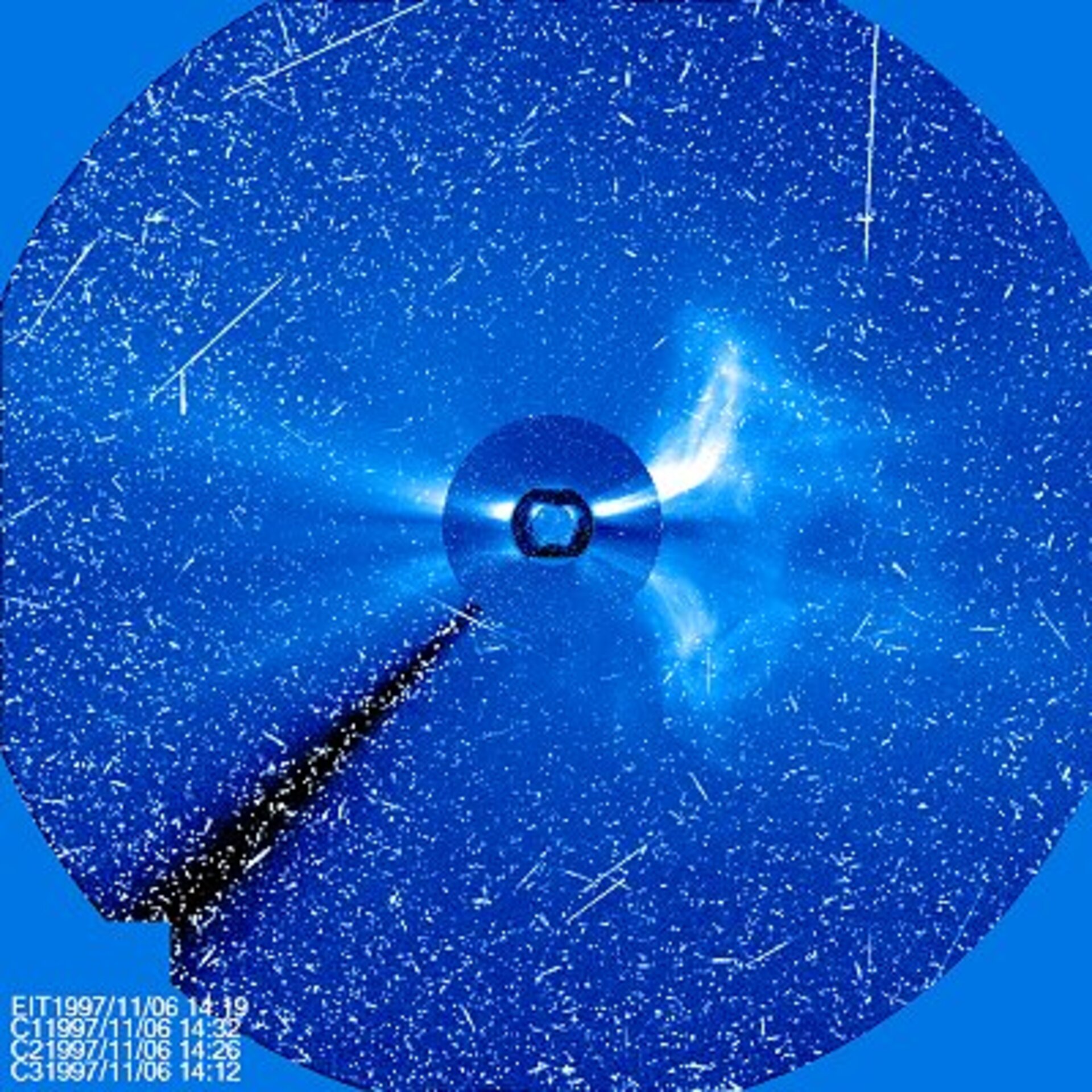ESC Space Radiation
Space Radiation Expert Service Centre (R-ESC)
Mission Statement
{{ esc.esc_mission_statement }}
 SOHO images altered by solar energetic particles (© SOHO - ESA & NASA)
SOHO images altered by solar energetic particles (© SOHO - ESA & NASA)Space radiation refers to high-energy ionized particles of different origin present in space and affecting spacecraft, components and biological systems. It covers mainly the galactic cosmic ray (GCR) background, solar energetic particle (SEP) events and the Earth's trapped radiation belts. Micron-size particulates are also considered as part of the R-ESC domain.
GCRs originate from outside the Solar System and are composed of high-energy protons, alpha particles and heavier nuclei. Their flux is constant and modulated by solar activity. GCRs are a threat to astronauts and spacecraft electronics on interplanetary missions. Life on Earth is protected from GCRs by the Earth's magnetic field and atmosphere. However, GCRs could be a health concern for aircraft crew flying regularly at high altitudes and latitudes.
SEPs consist primarily of protons and electrons accelerated by solar flares or interplanetary shock waves associated with Coronal Mass Ejections (CMEs). Their intensity and occurrence are difficult to predict. SEPs cause similar damage as GCRs. They are also a threat for astronauts during an extravehicular activity (EVA) and a source of solar panel degradation.
Trapped radiation belts surround planets with a substantial magnetic field, such as Earth or Jupiter. The radiation belts are composed mostly of protons and electrons. The dose deposition and non-ionizing energy loss caused by the radiation belt population interacting with spacecraft materials generate degradation in solar panels and other spacecraft components. The radiation belt populations may also cause spacecraft charging effects.
Micron-sized particle impacts over a period of time will degrade optical surfaces on spacecraft.